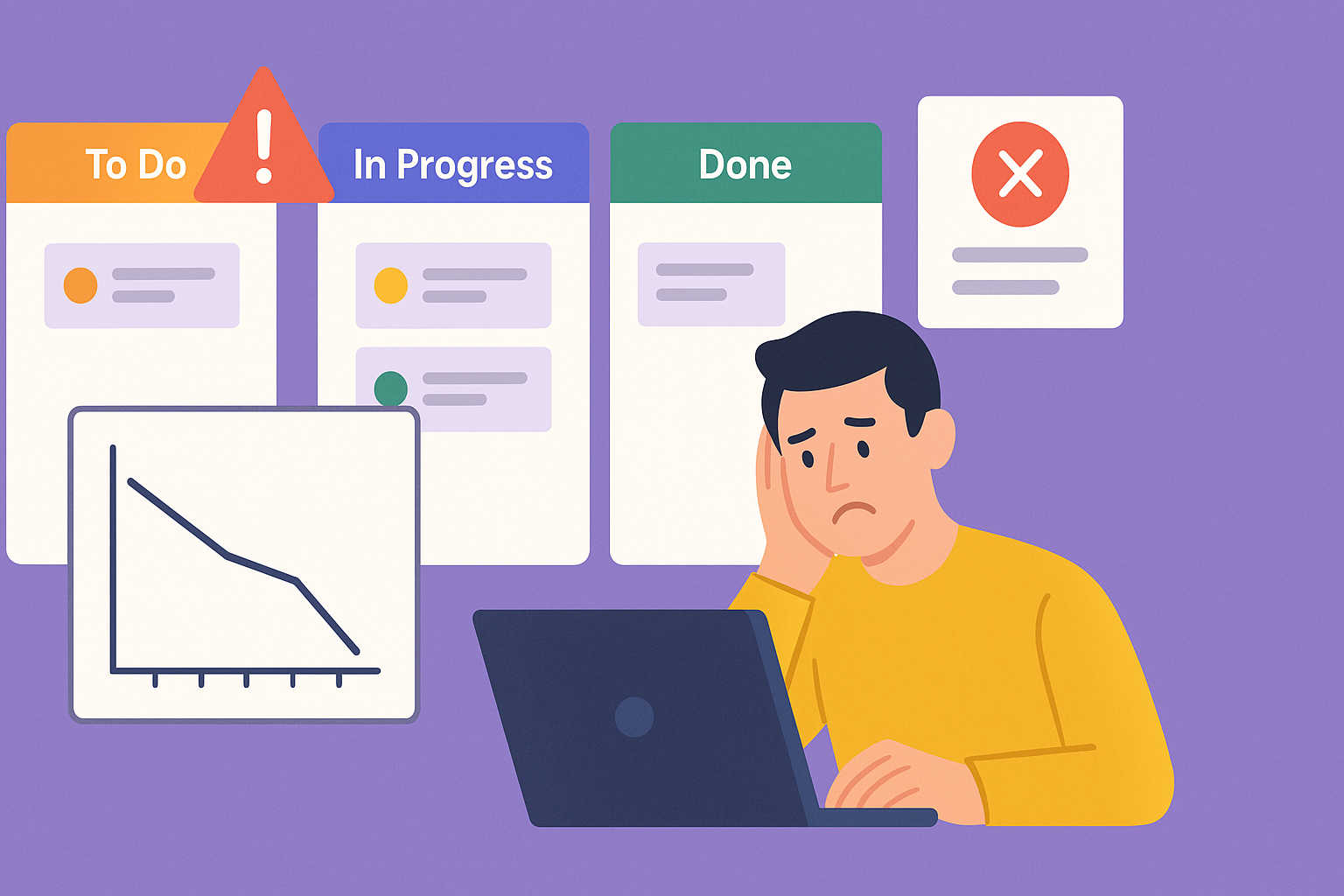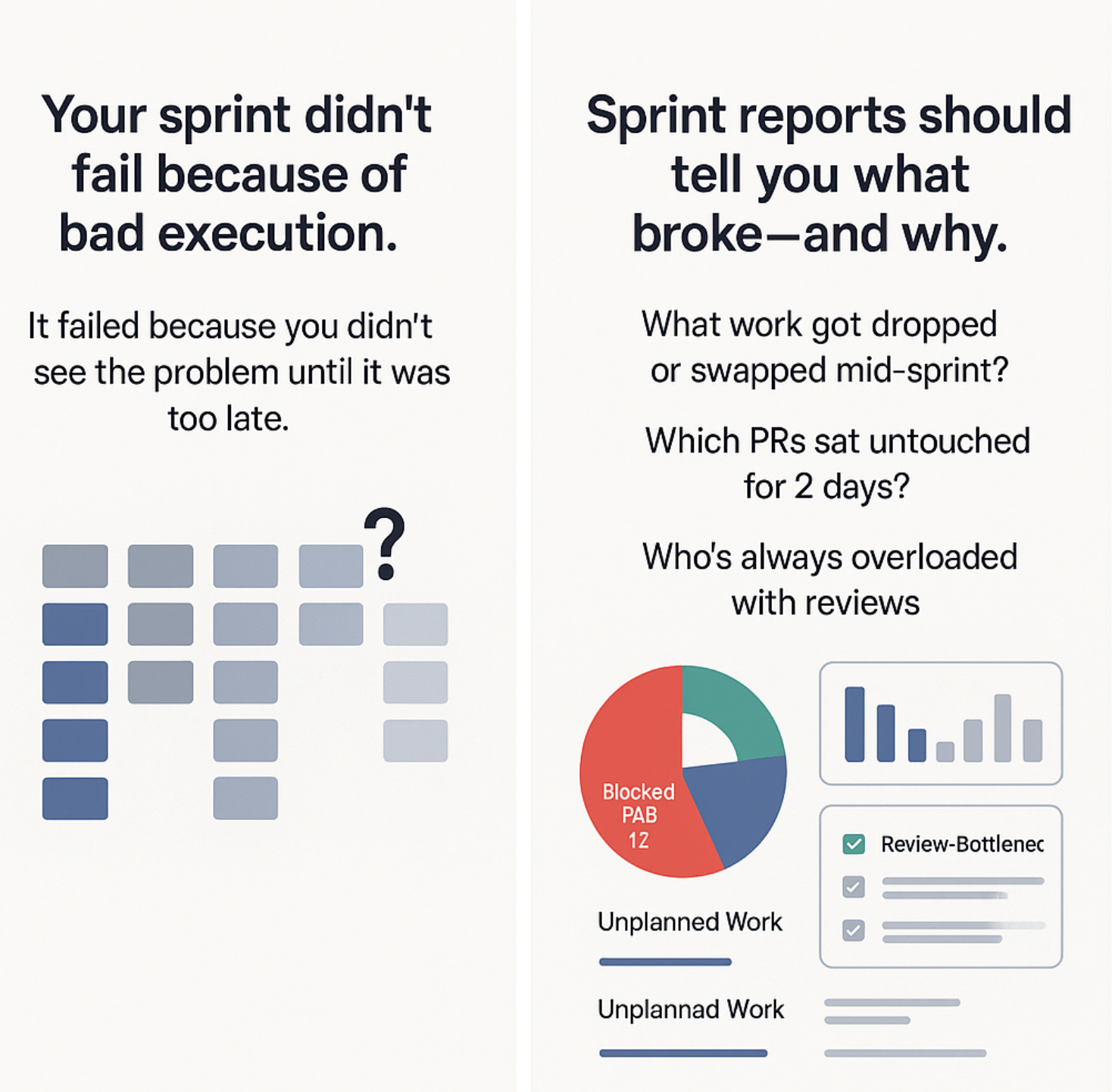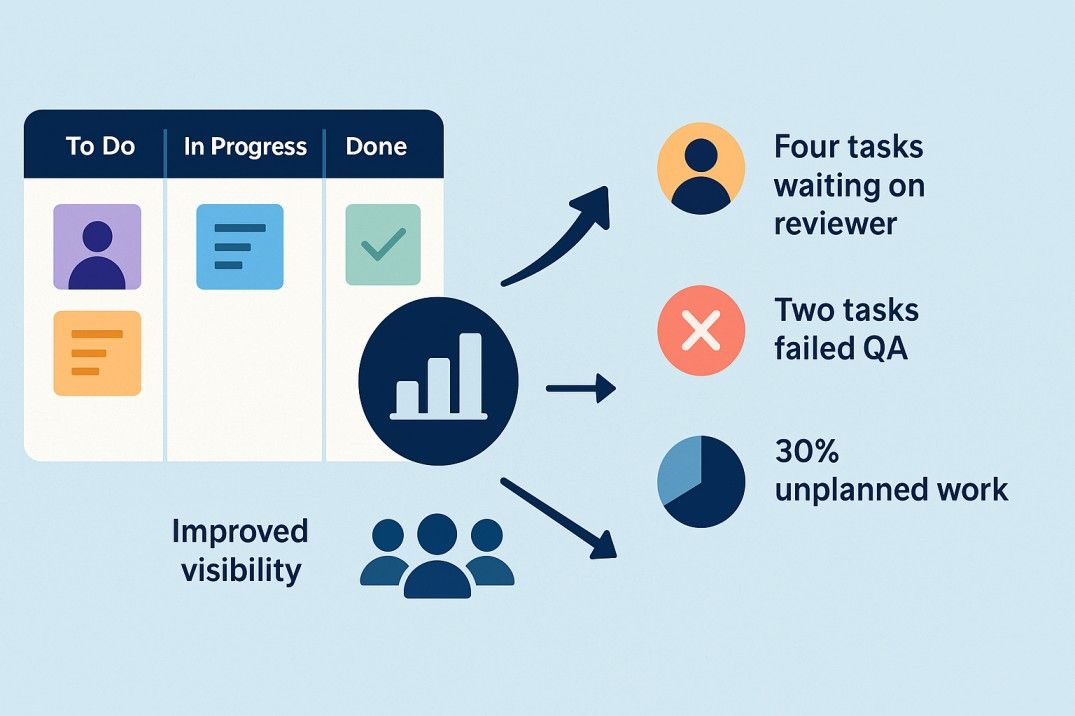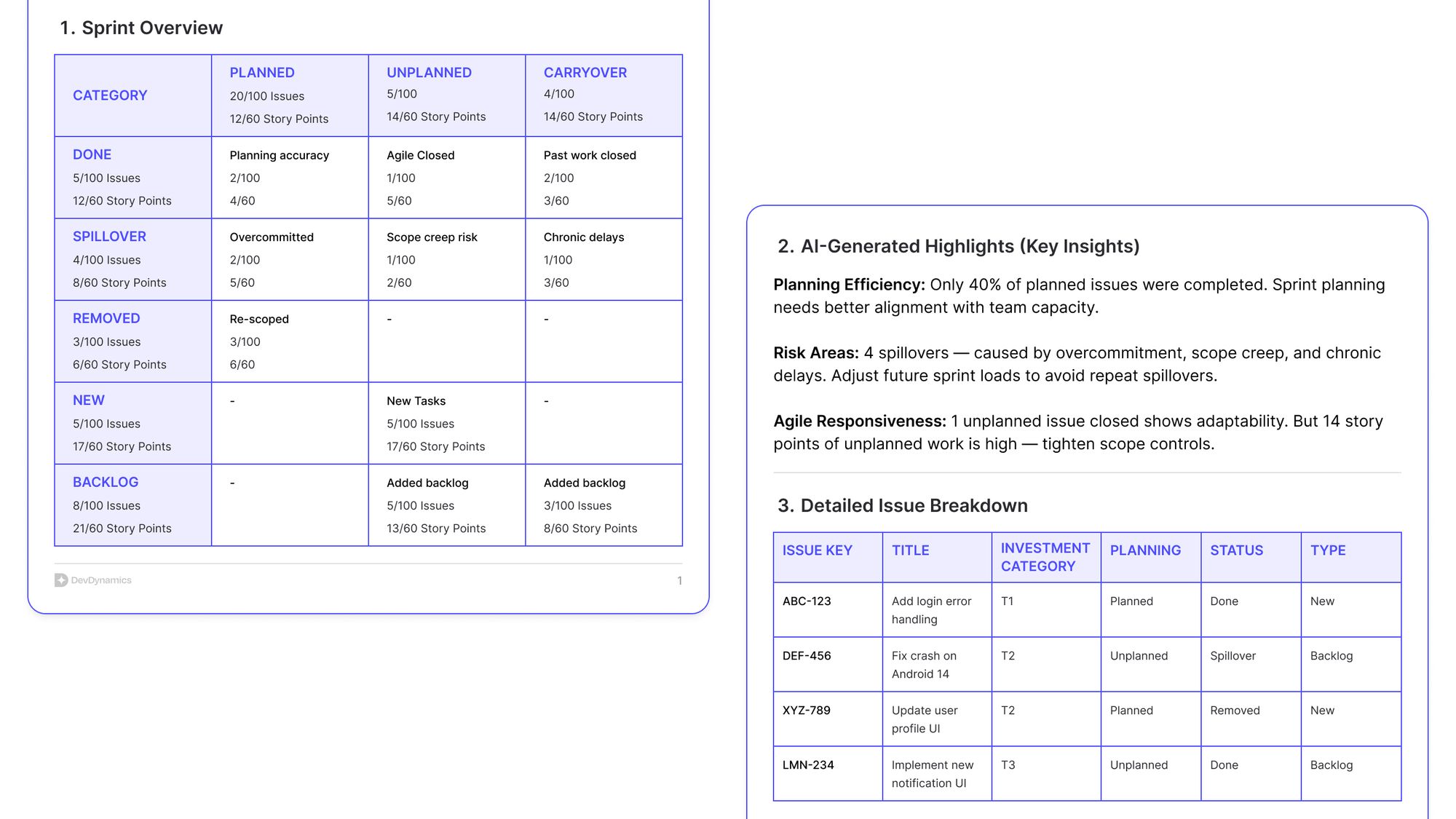Why Do Our Sprints Keep Slipping? A Clear Look at the Real Issues and How to Solve Them

When Team Zenith kicked off their latest sprint, morale was high. They had groomed the backlog, assigned story points, and set up a neat Scrum board in Jira. The plan was to deliver a new set of features in just two weeks. But halfway through, it all began to unravel: unexpected production bugs surfaced, one developer got stuck waiting for a code review, and design signoff took far longer than expected. By the end of the sprint, a solid chunk of planned work had spilled over, again.
Sound familiar? If you’ve ever felt frustrated by missed sprint goals or a burndown chart that drops too late to be of any practical use, you’re in good company. This post takes a deeper look at why sprints slip in the first place—and how data-driven sprint reporting can turn the tide for engineering teams.
The Hidden Roots of Sprint Slippage
In most Agile approaches be it Scrum or Kanban sprints exist to bring clarity and predictability to software development. Yet many teams fall short of that goal for a few common reasons:
- Unplanned Work
Production outages or urgent client requests can suddenly appear, hijacking effort from the stories you initially committed to. - Review and QA Bottlenecks
A single busy reviewer can stall pull requests for days. Meanwhile, QA might stumble over an unstable staging environment or incomplete specs. - Ambiguous Requirements
If the acceptance criteria aren’t fully fleshed out, tasks end up bouncing back and forth in “In Progress,” racking up rework time. - Late Discovery of Blockers
The standard burndown chart might show you’re behind—but it rarely explains why. By the time you notice a trend, it’s often too late to fix it this sprint.
For Team Zenith, those blockers came in the form of urgent bug fixes and delayed approvals. No one had an early warning system to show exactly where tasks were stuck. So they scrambled—and still fell short.
Why Traditional Scrum Boards and Burndown Charts Aren’t Enough
Take a look at any typical sprint dashboard, and you might see a tidy graph showing the ideal vs. actual burn. But these charts don’t capture:
- Which tasks were re-opened multiple times (nor the reason)
- How test coverage or CI/CD failures impacted delivery
- Where code reviews stalled, and for how long
- When unplanned work replaced planned tickets
In other words, burndown charts answer the question, “Are we on track?” without explaining “What derailed us?” or “How can we fix it in the future?” By the time Team Zenith’s burndown chart took a nosedive, they had already lost too many work hours to unplanned bugs and blocked PRs. They needed insights more granular and immediate than a line dropping on a chart.
Data-Driven Sprint Reports

What if, mid-sprint, you could pinpoint exactly which tasks are at risk, who is overloaded with code reviews, and whether new feature requests are eating up capacity? That’s the essence of data-driven sprint reporting.
1. Real-Time Warnings
A robust sprint report doesn’t wait for the retrospective; it highlights issues as they emerge. If the QA environment is repeatedly failing on the same test suite, you’ll see that pattern right away and triage it before it derails the entire sprint.
2. Merge and Review Insights
Instead of just knowing “we finished 10 out of 20 tasks,” you see that 4 tasks stalled in “Review” for over 48 hours. That’s a clear sign to redistribute reviewer load or break down PRs into smaller chunks. Even small improvements in pull request cycle time can dramatically reduce the chance of sprint slippage.
3. Unplanned vs. Planned Work
Identify which tasks truly derailed your Agile commitments. When you can measure how many hours went to production hotfixes—or how often you had to handle unexpected requests from leadership—you gain the data needed to adjust future sprint planning or push back on scope creep.
4. AI-Driven Analysis
Some platforms incorporate machine learning to detect repeated issues—like environment instability or one team member perpetually dealing with rework. These insights don’t just show what happened; they explain why it keeps happening.
How Team Zenith Improved their Sprints

Once Team Zenith realized they needed better visibility, they moved beyond simple board metrics. By adopting data-driven sprint reporting , they discovered:
- Four tasks were stuck waiting for the same senior reviewer, who also handled priority incidents.
- Two tasks bounced back from QA because acceptance criteria weren’t clear upfront.
- Several unplanned requests from a separate team took up 30% of their total capacity yet never showed on the original sprint plan.
Within two sprints, they reduced merge wait times by distributing reviews among more developers and clarifying acceptance criteria before writing any code. They also started flagging unplanned requests earlier, helping them renegotiate scope mid-sprint instead of simply missing goals.
Why DevDynamics?
If you recognize these patterns in your own sprints, DevDynamics offers an integrated approach that goes straight to the root causes:

- We integrate with your entire tech-stack : Pull in data from Jira, GitHub, and your CI/CD pipelines. No manual overhead.
- AI-Powered Insights: Spot repeated environment failures, rework loops, or delayed reviews before they become sprint killers.
- Custom configurations: Configure your view by epics, user stories, or even test coverage changes, so you know which teams or modules are struggling.
- Mid-Sprint Alerts: Get real-time flags on blocked tickets or PRs. Because seeing you’re behind at the retro is already too late.
Result: A sprint process that’s predictable, transparent, and easier to improve continuously.
Moving Toward Predictable Delivery
Sprints aren’t supposed to be chaos. They’re meant to provide a rhythm that helps teams deliver consistently while adapting to change. When you give your team a clear lens into why tasks slip, you transform your retrospectives from blame sessions into constructive problem-solving. Team Zenith proved it’s possible to save sprints (and sanity) simply by shining a light on the hidden hurdles.
Ready to Stop the Slipping?
Don’t let your next sprint go off the rails because nobody noticed the creeping backlog of unplanned work or the PR review jam until day nine. With DevDynamics:
- You’ll see exactly where sprint capacity is going.
- You’ll know which tasks are stuck and why before it’s too late.
- You’ll have the data to make smart calls on scope changes and resource allocation.
Ready to make slipping sprints a thing of the past?

